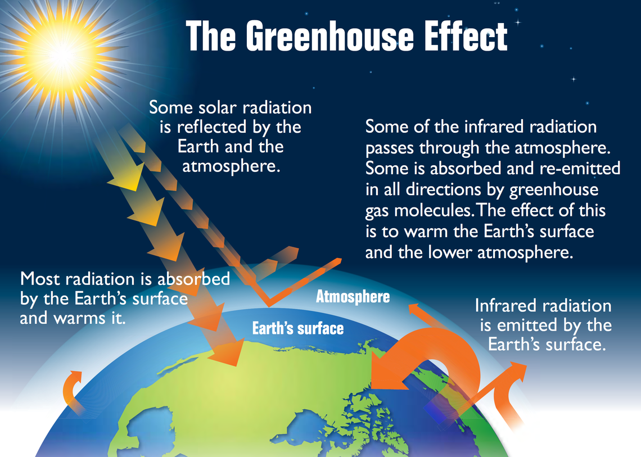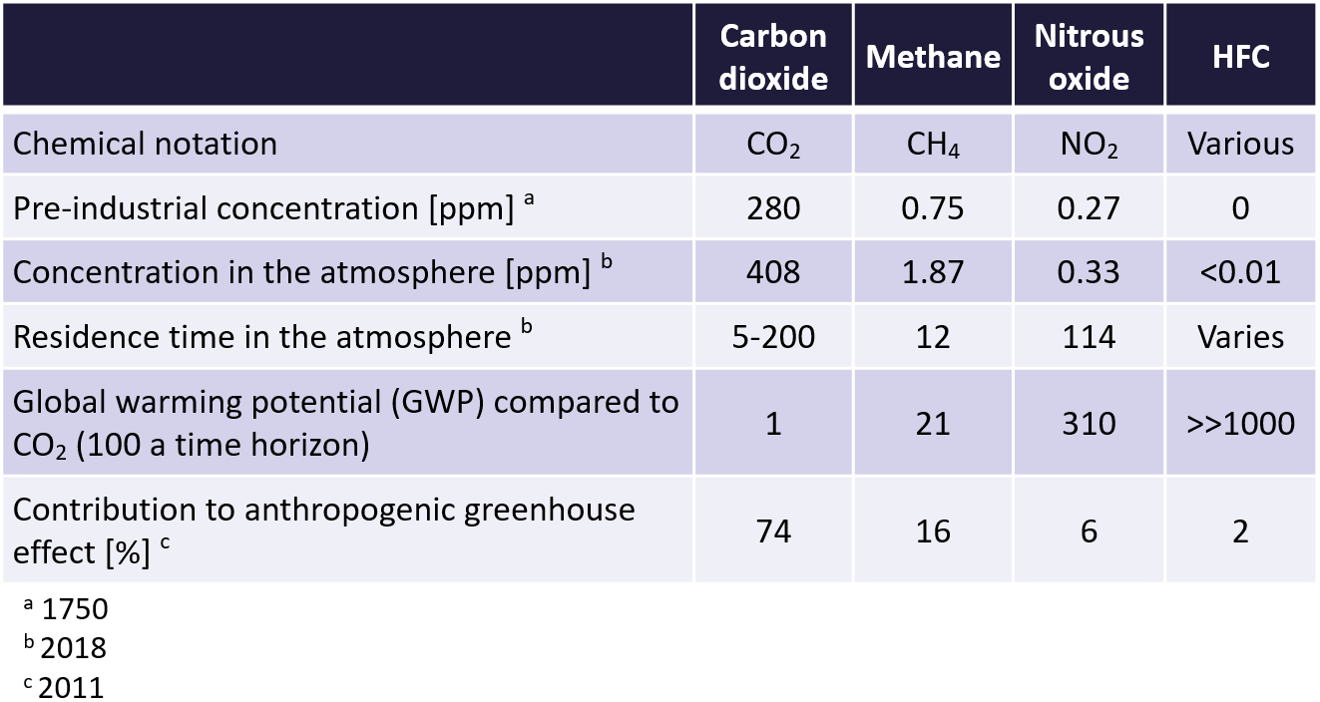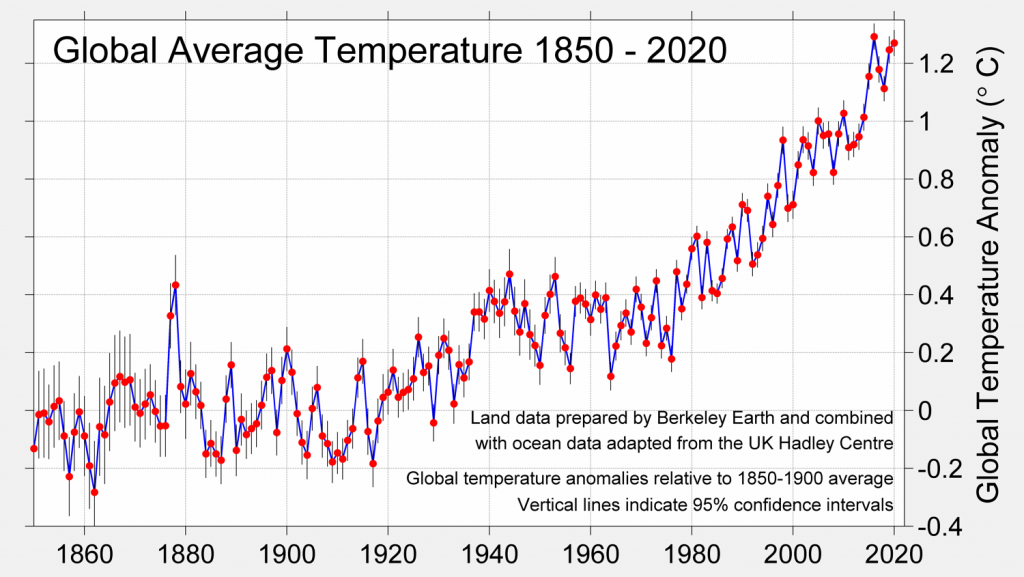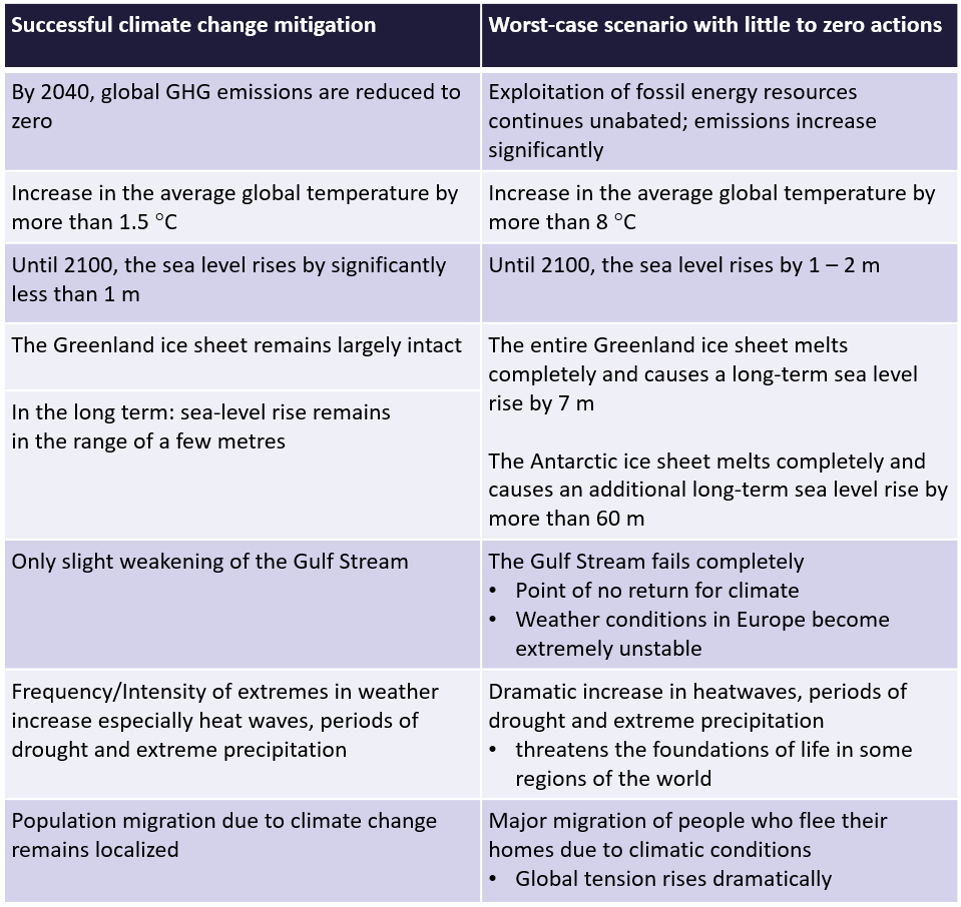1.1 Climate Change
| Website: | Hamburg Open Online University |
| Kurs: | Green Hydrogen |
| Buch: | 1.1 Climate Change |
| Gedruckt von: | Gast |
| Datum: | Montag, 5. Januar 2026, 02:26 |
Beschreibung
This chapter discusses the link between climate change and green hydrogen. It
highlights the importance of green hydrogen as a sustainable energy
carrier and explores its potential in reducing greenhouse gas emissions.
Physical principles of climate change
All life on earth depends on radiation from the sun. When solar radiation reaches the earth's surface, one fraction of the incoming radiation is directly reflected. However, the greater part of the radiation is absorbed by the earth's surface and later re-emitted in the form of long-wave thermal radiation. If the earth had no atmosphere, this long-wave heat radiation would be completely emitted into space and the earth’s surface temperature would not exceed -18 °C.
Thankfully, the earth does have an atmosphere: some of its contained gases, the so-called greenhouse gases (GHG), absorb parts of the outgoing long-wave radiation emitted from the earth’s surface. When the radiation absorbed by greenhouse gases such as water vapour, carbon dioxide and methane is set free again, it is either emitted into space or else returned to the earth’s surface. As a result of the back radiation from greenhouse gases, the earth's surface is additionally heated. Thus, the temperature at the earth is raised by 33 °C to an average temperature of 15 °C.

Greenhouse gases – Definition and origins
Examples of greenhouse gases with a significant influence on the global average temperature are:
- Carbon dioxide (CO2)
- Methane (CH4)
- Nitrous oxide (N2O)
- Tropospheric ozone (O3)
- Chlorofluorocarbons (CFCs)
- Hydrofluorocarbons (HFC)

There are different sources for anthropogenic generation of greenhouse gases. CO2 is mostly emitted due to combustion processes of fossil energy carriers, such as coal, oil and natural gas. In addition, forestry and land use change also contribute to the anthropogenic greenhouse effect caused by CO2 emissions. CH4 originates from rice fields, cattle farming and landfills or is emitted during exploitation of fossil energies, e.g. natural gas production/extraction. Nitrous oxide (sometimes called laughing gas) mainly forms due to the excessive use of nitrogenous fertilizers in agriculture. Hydrofluorocarbons – mainly used as refrigerants – are the successors of Chlorofluorocarbons which have already been banned by the Montreal Protocol.
Consequences of climate change
Considering the last 100 years, a global average temperature rise of about 1 °C can be observed. In 2010, the global annual average temperature was 1 °C above the pre-industrial temperature level for the first time. Since 2014, the average deviation never fell below 1 °C. The highest deviations were registered in 2016 and 2020 and ranged between plus 1.2 and 1.3 °C compared to pre-industrial times.
In the grafic below the exponential increase in temperature within the last 100 years can be comprehended. According to the state of scientific research on climate change, which is regularly compiled, assessed and published by the Intergovernmental Panel on Climate Change (IPCC), there is no natural explanation for this sudden change. On the contrary, the overwhelming majority of renowned climate researchers agree that the global warming of recent decades is almost exclusively attributable to human activities.

- Glaciers are shrinking worldwide
- The Alpine glaciers have already lost two thirds of their volume between 1850 and 2010.
- Ice sheets on Greenland and Antarctica are shrinking
- Summer Arctic sea ice cover decreased from 7.5 million square kilometres in 1982 to 3.5 million square kilometres in 2012
- Sea level increase by an average of 3.1 mm/year since 1993 due to thermal expansion of water in the oceans, glacier and ice sheet melting, in the twentieth century 17 cm in total
- Increasing frequency of extremes in weather
- Heavy precipitation (e.g. rainfall)
- The ten year moving average of the occurrence of events which resulted in flood losses in Europe rose from 3 per year in 1900 to 18 per year in 2016
- Extreme temperatures (e.g. number of days in Germany with temperatures above 30 °C increases by about 1.25 days per decade under consideration of the trend line)
- Droughts (since the 1970s not only the frequency but also the intensity increased)
- Heavy precipitation (e.g. rainfall)
- Tropical cyclones increased in intensity since the 1970s
- The ten year moving average of the number of Atlantic tropical cyclones which caused significant losses on the US mainland increased from 1.2 in 1970 to 4.2 in 2005, implying that the intensity and/or the frequency of these events increased
Possible future consequences of climate change
Preventing any climate change at all is no longer possible. However, it is still possible to limit climate change to a bearable level. This requires the rapid implementation of ambitious climate protection measures. If no action is taken, there is a risk of “points of no return”, such as melting of the entire Greenland ice sheet and its subsequent impact on the Gulf Stream.
